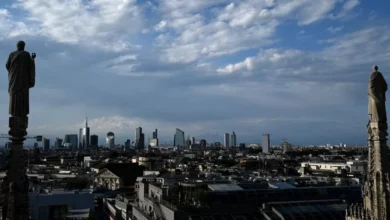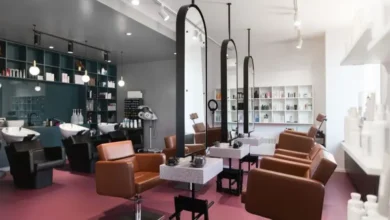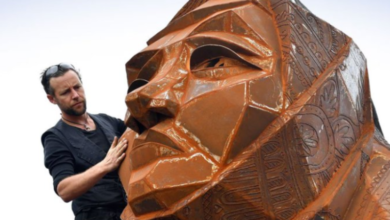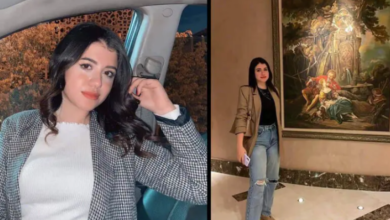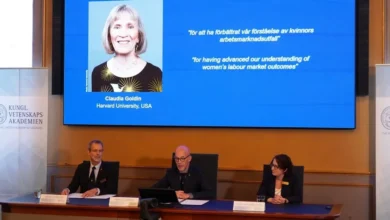First time in Saudi Arabia: New exhibition spotlights life and works of Etel Adnan
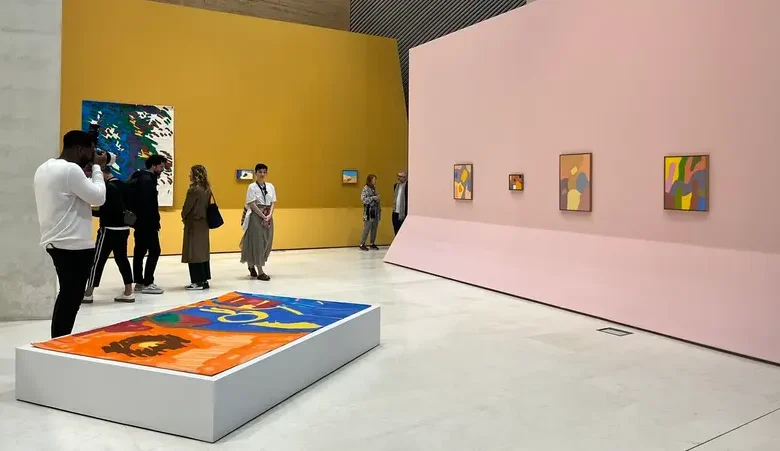
This month, the King Abdulaziz Center for World Culture (Ithra) in Saudi Arabia is hosting ‘Etel Adnan, Between East and West’ – an exhibition focusing on the life and works of one of the MENA region’s most significant and influential multidisciplinary artists.
This retrospective – the first of its kind in the Kingdom – encompasses works chosen from across the entirety of the late Lebanese-American artist’s life, comprising an amazing collection of 41 works, made possible by loans provided by both private collectors as well as multiple prestigious international institutions, including the Sharjah Art Foundation, Sfeir-Semler Gallery, and Sursock Museum.
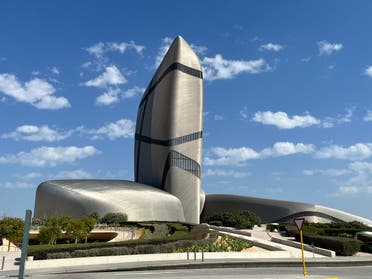
“She was a self-made woman, a self-made intellectual,” Curator Sébastien Delot told Al Arabiya English. “She had a very inquisitive mind and an amazing memory. Great art is really the meeting point between the intellectual and the emotional, and I think [Adnan] was very much aware of this.”
“This is the first solo exhibition [at Ithra] that covers a journey of this size,” said Ithra’s Head of Museum Farah Abushullaih. “This marks a very important milestone for us. We are celebrating a very established artist, one who has proven her commitment to ensuring that cultures are connected through different bridges [created by artists].”
Abushullaih continued: “This is something that we stand for here. As a center for world culture, we’re all about building bridges, connecting people, and making sure that we feel like we are all one and united. This exhibition is something that stands true to that.”
Variety of disparate cultural influences
Adnan was born in 1925 in Beirut, her parents having emigrated to Lebanon from Smyrna following the collapse of the Ottoman Empire after the First World War. Her father was a high-ranking Turkish military officer from a wealthy family. In comparison, her Greek mother grew up in abject poverty. As a result, Adnan’s identity was immediately shaped by a variety of disparate cultural influences.
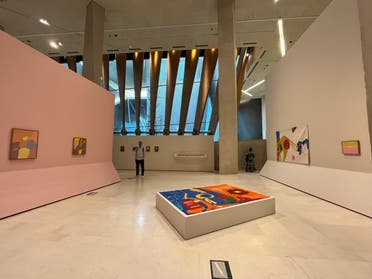
As a young woman, she traveled to France to study philosophy at the University of Paris, before going on to attend graduate programs at the University of California, Berkeley, and Harvard University. Her early works of poetry were written in French. However, she began to dislike the implications of her writing in French, prompting a shift towards visual art and abstraction.
Adnan’s life was also defined by social activism, embodying a lifelong and radical commitment to feminism, art, and political action, as well as a powerful opposition to violence and war. In addition to her artistic career, she was also a noted journalist and served as editor for several notable publications.
She continued to produce new artistic works until she passed away in 2021 at the age of 96.
‘A multifaceted identity’
“[There is] this awareness of the differences of culture; of what makes you special,” said Delot. “This is part of the complexity of possessing a multifaceted identity – the result of your own personal family history, and ‘History’ with a capital ‘H’ – but you acknowledge there are differences within this and richness.”
“We wanted to make sure that different aspects of life were highlighted,” echoed Abushullaih. “She has her philosophy, her poetry, her novels, her paintings, and then her own activism. [She created] this community around her.”
The breadth of her artistic expression would eventually grow to include paintings, carpets, Leporellos, films, and ceramics, all of which are represented in Ithra’s exhibition.
As visitors enter the venue, they are immediately greeted by an imposing, hand-painted ceramic mural, one of four Adnan pieces held in Ithra’s own collection.
They are then led toward a projection theater and a montage of ‘Super 8’ films produced by Adnan in Yosemite, New York, and San Francisco during the 1980s, before reaching the main exhibition floor where the rest of the showcase is displayed. Here, guests can discover a diverse selection of oil and watercolor paintings that demonstrate Adnan’s singular affinity to transcend the barriers of understanding using her own distinct and colorful abstract visual style.
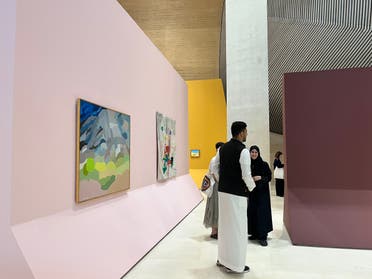
Combining visual and written languages
This also includes hand-woven wool tapestries inspired by Persian rugs and traditional Arabic weaving, along with Adnan’s ‘Leporellos,’ a distinctive form of accordion-folded sketchbooks that combine both visual and written languages, revealing a deep connection between Adnan’s western and Arab influences.
“In a way, especially in the art world, people want to know what an artist ‘owns,’ and I could say Etel Adnan owns Leporellos,” said Delot. “That is the medium that she really mastered; it is the fusion point between writing and image.”
The staggering variety shown within Adnan’s portfolio highlights her deliberate striving towards a universal form of meaning, divorced from known cultural touchstones or real-life objects. Instead, her bright, almost childish forms engage with audiences on an emotional, instinctive level.
“Most of the paintings are not the results of locations or specific things,” explained Delot. “More like a film, these are projections of our own memory that get distorted with time. This leaves one wondering: ‘Is it real? Is it a fact that I remember?’ This ambiguity suits Adnan because it’s a fine line, and she’s always playing on this. She is – in a way – the daughter of abstraction.”
“I think every artist is defending the right to contradict the self,” he mused. “Human beings are always in that position of saying one thing and – the next minute – saying something quite the opposite. Sometimes, Adnan affirms one thing and then – maybe a year later, or even a couple of pages later – says something else. It is part of the complexity of what we are.”


